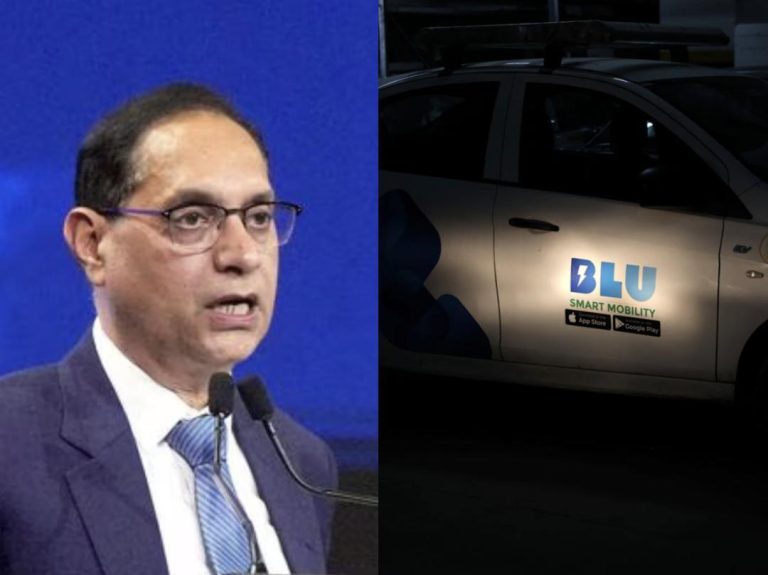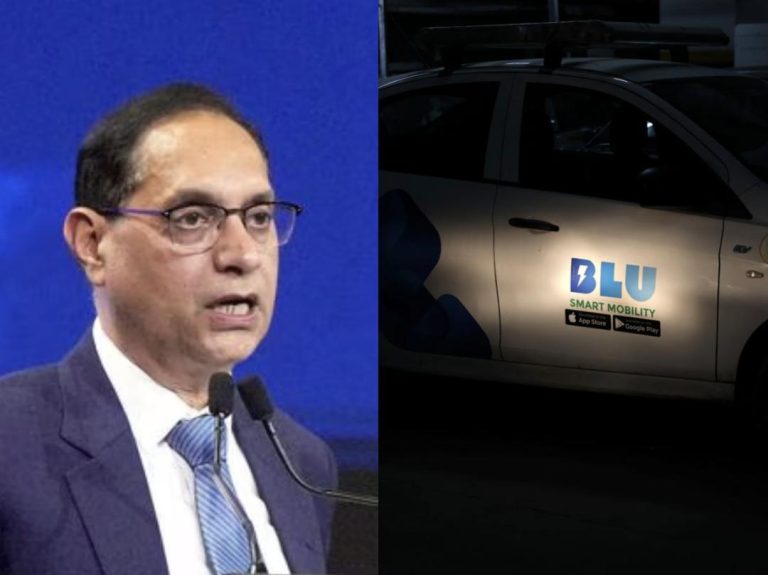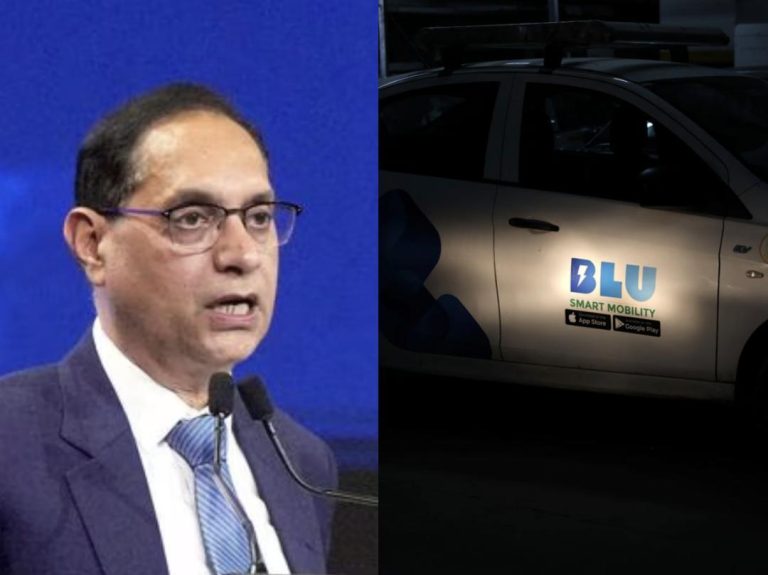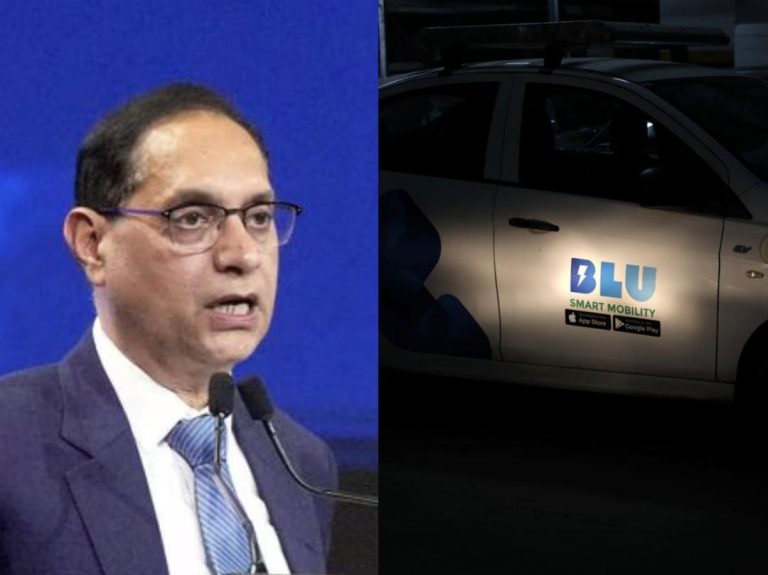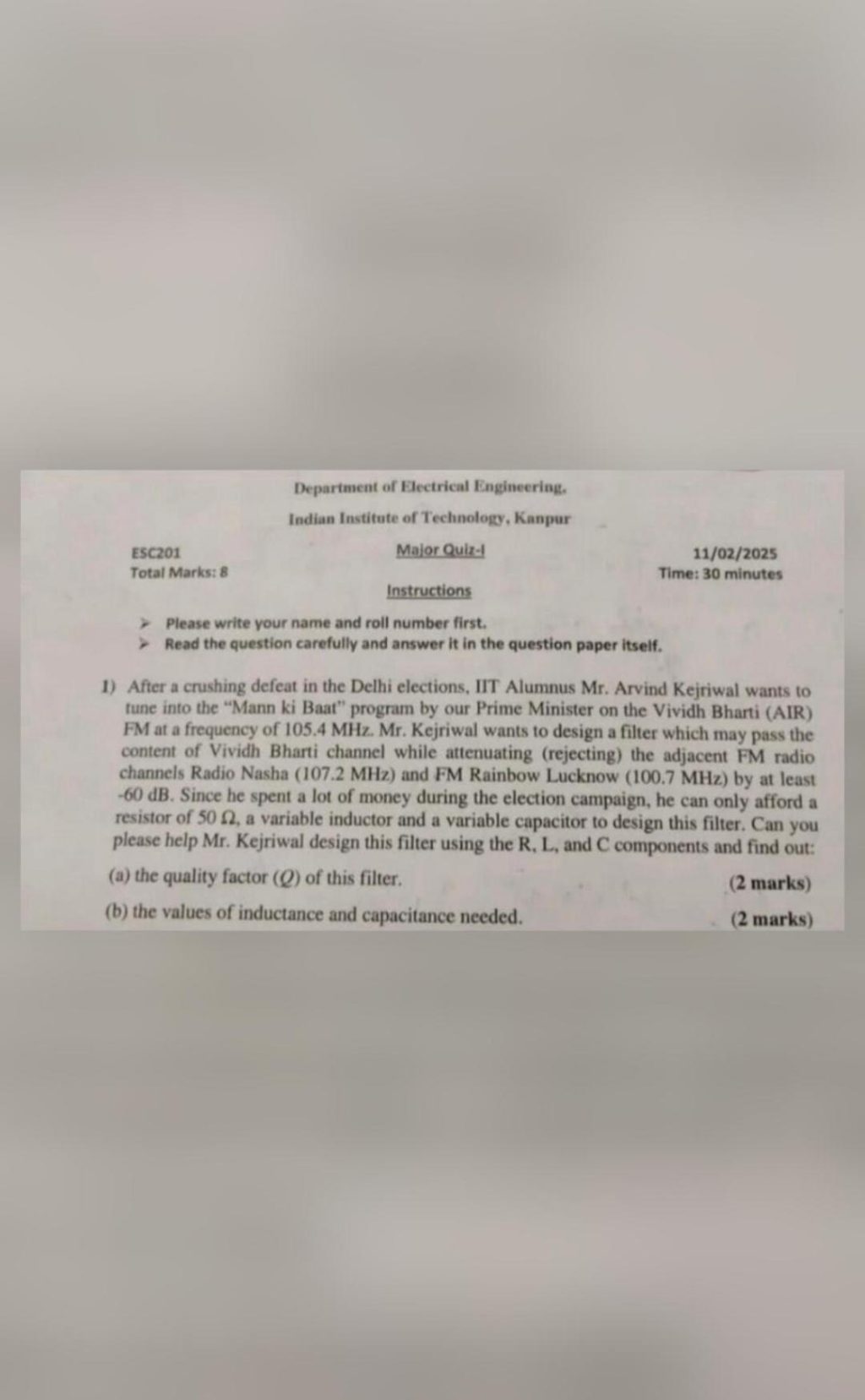
Wanted Exam to be More Engaging: IIT Kanpur on ‘Kejriwal & Mann Ki Baat’ Question
In a recent turn of events, a question paper from IIT Kanpur has gone viral on social media, sparking both amusement and curiosity among netizens. The question, which asked students to design a filter for Arvind Kejriwal, the Chief Minister of Delhi, to help him listen to Prime Minister Narendra Modi’s ‘Mann Ki Baat’ radio address after his party’s defeat in the Delhi Assembly elections, has set tongues wagging.
The picture of the question paper was widely shared on social media, with many users poking fun at the question’s uniqueness and relevance. The question, which was part of a course on Signal Processing, was drafted by a professor at IIT Kanpur who likes to use “references to well-known personalities…to make exam questions more engaging.”
The professor’s innovative approach to making exam questions more engaging has sparked a debate on the role of creativity in education. While some have praised the professor’s efforts to make learning more enjoyable, others have questioned the relevance of such questions in a traditional academic setting.
So, what does this incident tell us about the state of education in India? Is it a step in the right direction to make learning more engaging, or is it a mere gimmick? Let’s dive deeper into this topic and explore the implications of this unusual question.
The Need for Engagement in Education
In recent years, there has been a growing recognition of the importance of engagement in education. With the rise of technology and changing learning habits, students are looking for more interactive and immersive learning experiences. The traditional lecture-based model of education, which has been the norm for decades, is no longer sufficient to hold students’ attention.
Research has shown that engaged students are more likely to be motivated, participate in class, and retain information better. Moreover, engaged students are more likely to develop a love for learning that extends beyond the classroom.
In this context, the IIT Kanpur professor’s decision to use a reference to a well-known personality like Arvind Kejriwal is a clever move. By making the question more relatable and interesting, the professor is able to pique the students’ interest and encourage them to think creatively.
The Power of Storytelling in Education
The IIT Kanpur question is also a great example of the power of storytelling in education. Storytelling has been used for centuries to convey complex ideas and emotions in a more engaging and memorable way. In education, storytelling can be used to make abstract concepts more relatable and to bring history to life.
By using real-life examples and anecdotes, teachers can make their lessons more engaging and interactive. This approach can help students to connect with the material on a deeper level and to develop a greater understanding of the subject matter.
The IIT Kanpur professor’s question is a great example of how storytelling can be used in education. By asking students to design a filter for Arvind Kejriwal to listen to ‘Mann Ki Baat’, the professor is able to convey complex technical concepts in a more relatable and interesting way.
Conclusion
The IIT Kanpur question has sparked a debate on the role of creativity in education. While some have praised the professor’s efforts to make learning more engaging, others have questioned the relevance of such questions in a traditional academic setting.
However, as we have seen, the question is not just a gimmick, but a thoughtful attempt to make learning more interesting and interactive. By using real-life examples and references to well-known personalities, the professor is able to convey complex technical concepts in a more relatable and engaging way.
As educators, we must recognize the importance of creativity and engagement in education. By incorporating more storytelling and real-life examples into our lessons, we can make learning more enjoyable and interactive for our students. The IIT Kanpur question is a great example of how this can be done, and we can learn a lot from the professor’s innovative approach.



